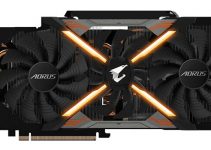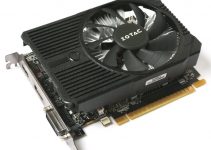The mainstream graphics card segment has received a major boost from AMD with the launch of RX 7600 XT. RX 7600 XT is basically a refresh of RX 7600 with higher GPU clock speed and double video memory. In the Radeon 7000 series lineup, the card sits above the RX 7600 and below the RX 7700 XT. The main competitor of RX 7600 XT from Nvidia is the GeForce RTX 4060 which is also a very good mainstream graphics for 1080p gaming at maximum settings. If you want to know how much better the RX 7600 XT is over the RX 7600 and how it competes against the RTX 4060, then go through the comparison below.
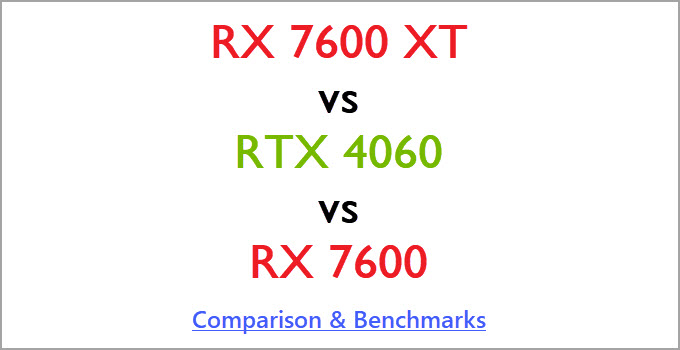
RX 7600 XT vs RTX 4060 vs RX 7600 Comparison
A quick comparison between RX 7600 XT, RTX 4060, and RX 7600 graphics cards based on their specifications, gaming performance, pricing, power consumption, and features.
GPU Architecture
RX 7600 XT and RX 7600 are based on the RDNA 3 GPU architecture on a 6nm fabrication process and use the same Navi 33 chip. They come with 2048 Stream Processors, 32 Ray Accelerators, and 64 AI Accelerators.
On the other hand, RTX 4060 is based on the Ada Lovelace GPU architecture and is built on a smaller 5nm TSMC manufacturing process. It uses an AD107 chip and comes with 3072 CUDA Cores, 24 RT Cores, and 96 Tensor Cores for AI-related tasks and processing.
Must Read: CUDA Cores vs Stream Processors
| RX 7600 XT | RTX 4060 | RX 7600 | |
| GPU Chip | Navi 33 | AD107 | Navi 33 |
| GPU Architecture | RDNA 3 | Ada Lovelace | RDNA 3 |
| Fabrication Process | 6nm | 5nm | 6nm |
| CUDA Cores/Stream Processors | 2048 Stream Processors | 3072 CUDA Cores | 2048 Stream Processors |
| RT Cores / Ray Accelerators | 32 | 24 | 32 |
| Tensor Cores / AI Accelerators | 64 | 96 | 64 |
Video RAM [VRAM]
RX 7600 XT comes with 16GB GDDR6 memory which is double what is present in the RX 7600 and RTX 4060. Its memory interface is 128-bit, runs at a speed of 18Gbps, and produces a bandwidth of 288GB/s. RX 7600 XT and RX 7600 also come equipped with 32MB Infinity Cache, an ultra-fast memory cache that can help to achieve peak memory bandwidth of up to 477 GB/s for a short amount of time. The GDDR6 memory of RTX 4060 has the same bus width of 128-bit but runs at a slightly slower speed of 17Gbps generating a bandwidth of 272 GB/s.
| RX 7600 XT | RTX 4060 | RX 7600 | |
| Memory Size | 16GB GDDR6 | 8GB GDDR6 | 8GB GDDR6 |
| Memory Interface | 128-bit | 128-bit | 12-bit |
| Memory Speed | 18 Gbps | 17Gbps | 18Gbps |
| Memory Bandwidth | 288 GB/s | 272 GB/s | 288 GB/s |
| Infinity Cache | 32MB | NA | 32MB |
Features
All these graphics cards support DirectX 12 Ultimate, OpenGL 4.6, and Vulkan and support variable refresh rate technologies (G-Sync/FreeSync) to reduce stuttering in games for a butter smooth gaming experience, PCIe 4.0, Real-Time Ray Tracing, HDMI 2.1, hardware AV1 encoding/decoding. Even though all three cards support a PCIe 4.0 interface, the PCIe lanes/bandwidth is limited to x8 only. This may cause a slight reduction of performance in some games with motherboards having PCIe 3.0 interface only.
Regarding image upscaling technology to increase frame rate or FPS in games, RTX 4060 supports DLSS (Deep Learning Super Sampling) while RX 7600 XT and RX 7600 support AMD FidelityFX Super Resolution (FSR). RX 7600 XT and RX 7600 support DisplayPort 2.1 (supports 8K Display Resolution at 165Hz) while RTX 4060 does not and has DisplayPort 1.4a.
| RX 7600 XT | RTX 4060 | RX 7600 | |
| Bus Interface | PCI Express 4.0 (x8) | PCI Express 4.0 (x8) | PCI Express 4.0 (x8) |
| DirectX | 12 Ultimate | 12 Ultimate | 12 Ultimate |
| OpenGL | 4.6 | 4.6 | 4.6 |
| Vulkan | 1.3 | 1.3 | 1.3 |
| SLI / CrossFire | NA | NA | NA |
| VR Ready | Yes | Yes | Yes |
| G-Sync/FreeSync | Yes | Yes | Yes |
| HDMI 2.1 | Yes | Yes | Yes |
| DisplayPort 2.1 | Yes | No | Yes |
| AV1 Support (Encode/Decode) | Yes | Yes | Yes |
| Real-Time Ray Tracing | Yes | Yes | Yes |
| Deep Learning Super Sampling (DLSS) | NA | Yes (DLSS 3) | NA |
| FidelityFX Super Resolution (FSR) | Yes (FSR 2 or 3) | NA | Yes (FSR 2 or 3) |
Gaming Performance
Here are the gaming benchmarks of these cards at 1080p and 1440p resolution in the latest AAA games.
1080p Gaming Benchmarks
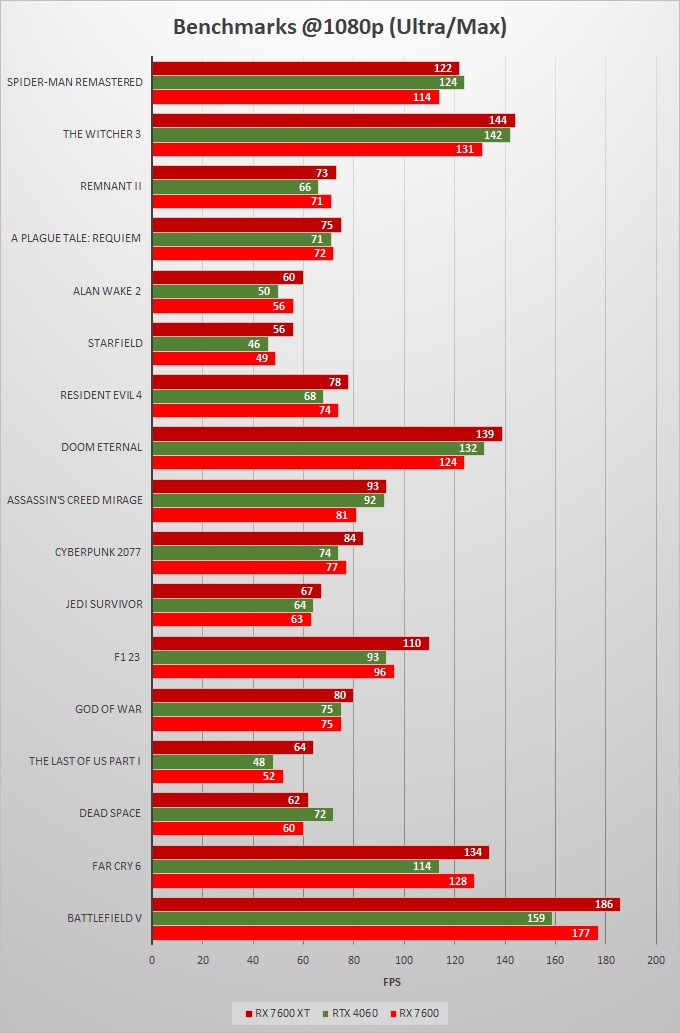
1440p Gaming Benchmarks
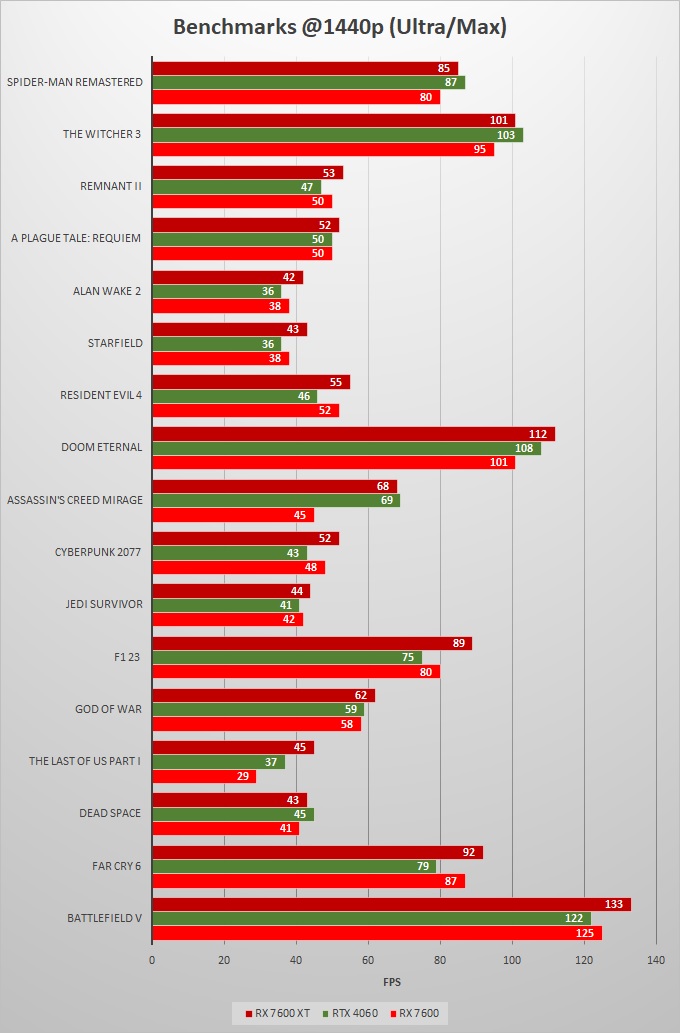
Here, RX 7600 XT is the fastest of all three cards. On average, it is around 7% faster than RTX 4060 and about 10% faster than RX 7600.
Power Consumption
RTX 4060 consumes the least amount of power while RX 7600 XT consumes the most. The power consumption of RTX 4060 is 115W, for RX 7600 it is 165W and for RX 7600 XT is 190W.
| RX 7600 XT | RTX 4060 | RX 7600 | |
| Power Connector | 8-pin PCIe | 8-pin PCIe | 8-pin PCIe |
| Power Consumption | 190W | 115W | 165W |
| Recommended PSU | 600W | 550W | 550W |
Pricing & Availability
The MSRP for the base models of these cards is as follows. For RTX 4060 it is USD 299, for RX 7600 it is USD 269 and for RX 7600 XT it is USD 329. You can check the latest prices of these cards from the links below.
Check RX 7600 XT Price on Amazon
Check RTX 4060 Price on Amazon
RX 7600 XT vs RTX 4060 vs RX 7600 Specifications
| RX 7600 XT | RTX 4060 | RX 7600 | |
| GPU Chip | Navi 33 | AD107 | Navi 33 |
| GPU Architecture | RDNA 3 | Ada Lovelace | RDNA 3 |
| Fabrication Process | 6nm | 5nm | 6nm |
| CUDA Cores/Stream Processors | 2048 Stream Processors | 3072 CUDA Cores | 2048 Stream Processors |
| RT Cores | 32 | 24 | 32 |
| Tensor Cores | 64 | 96 | 64 |
| Memory Size | 16GB GDDR6 | 8GB GDDR6 | 8GB GDDR6 |
| Memory Interface | 128-bit | 128-bit | 12-bit |
| Memory Speed | 18 Gbps | 17Gbps | 18Gbps |
| Memory Bandwidth | 288 GB/s | 272 GB/s | 288 GB/s |
| Bus Interface | PCI Express 4.0 (x8) | PCI Express 4.0 (x8) | PCI Express 4.0 (x8) |
| DirectX | 12 Ultimate | 12 Ultimate | 12 Ultimate |
| OpenGL | 4.6 | 4.6 | 4.6 |
| Vulkan | 1.3 | 1.3 | 1.3 |
| SLI / CrossFire | NA | NA | NA |
| VR Ready | Yes | Yes | Yes |
| G-Sync/FreeSync | Yes | Yes | Yes |
| Power Consumption | 190W | 115W | 165W |
| Recommended PSU | 600W | 550W | 550W |
Final Words
RX 7600 XT is a decent card but it is priced quite high for the liking. A 60 USD increase over the RX 7600 MSRP is quite significant even if RX 7600 XT comes with double the VRAM of RX 7600. Moreover, the card is not very energy efficient compared to both RTX 4060 and RX 7600. If priced at USD 299, RX 7600 XT can be a worthy purchase even with relatively higher power consumption. The extra 8GB VRAM is not of much use in most games because the card is targeted mainly for 1080p gaming. However, it does have the capability for 1440p gaming but then you have to compromise on graphics quality or settings and have to reduce some graphics settings to get 60+ FPS in some GPU-intensive AAA games. If you have to say something or have any queries then do let me know in the comment section below.
(*This post may contain affiliate links, which means I may receive a small commission if you choose to purchase through the links I provide (at no extra cost to you). Thank you for supporting the work I put into this site!)
